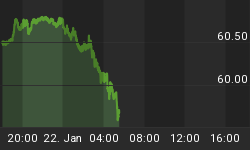Eighteen months ago, the Federal Reserve embarked on a long, but predictable road of lifting short-term US interest rates, to reach an unknown "neutral rate," that would neither stimulate nor weaken the US economy. Federal Reserve chairman Alan Greenspan did not know where the neutral rate would ultimately be reached, but after lifting the fed funds rate by a quarter-point to 4.25% on December 13th, the Fed did not mention the "A" word, or "accommodative" in its policy statement, a signal to the financial markets that the elusive neutral rate was near.
The US dollar fell sharply in the foreign exchange market, gold rose above $500 per ounce, homebuilder stocks pushed ahead in a knee jerk reaction, and global equity markets cheered with a big Santa Claus rally, since the end of the Fed's tightening campaign is apparently on the horizon.
But Greenspan is still perplexed by what he calls the "conundrum" of the bond market. The central bank gradually lifted its overnight loan rate by 325 basis points to 4.25% over eighteen months, yet the Treasury's ten year yield had barely budged. The ten year yield rose by only 15 basis points to 4.40%, since the rate hike campaign began in June 2004. Logically, the Fed might have figured that long term rates to rise by at least 100 basis points in response to tighter monetary conditions.
When the Federal Reserve lifts the fed funds rate by quarter-point to 4.50% in January 2006, as widely telegraphed, the yield on the Treasury's two year note could be higher than ten year yields, producing what is known as an "inverted" yield curve. Usually, when lenders in the bond market are willing to accept lower interest rates for longer term debt than for shorter term debt, it is a signal that the US economy is about to experience a serious slowdown or even a recession within twelve months.
The last time the bond market witnessed an inverted yield curve was five years ago, at the height of the frenzy for internet and high tech stocks. Then, the bond market was inverted, but stock market investors were not afraid, and argued that its shape reflected the Clinton administration's retirement of longer term debt from huge budget surpluses. But the Nasdaq and S&P 500 did begin to implode in 2001 and an eight month economic recession arrived in 2002. Today, in January 2006, there is speculation that the US housing bubble might deflate next, bringing on a recession and an easier Fed policy in the second half of the year.
But never before has the US bond market been so closely intertwined with the global money markets. In 2004 for instance, China and Japan bought a combined $300 billion of US Treasury bonds. While Japan moved to the sidelines in 2005, Arab oil producers picked up the slack and rolled about $115 billion of Petro-dollars into US Treasuries. China boosted its bond position by another $79 billion during the first ten months of 2005. So while the Fed was raising short-term rates, China, Japan, and Arab oil producers were putting a lid on longer term interest rates.
Once again, stock market investors say there is nothing to fear from an inverted yield curve, because it has simply been distorted by foreign buyers of US bonds, and does not signal an imminent bursting of the US housing bubble, which could crush the economy. But recent indications are ominous. New US home sales fell 11.3% in November, the largest monthly drop since 1996, and applications for home mortgages fell to a 3-½ year low. Existing home sales fell 1.7%, for a second month in November, while home prices fell $3,000 to an average $215,000, and the number of homes for sale rose to an annual 2.9 million, the highest in 20-years.

Then on January 1st, 2006, Yu Yongding, chief adviser to the People's Bank of China warned for the second time in a month, that Beijing should scale down its purchases of US dollars and bonds. Yu warned that the new Fed chief Ben Bernanke might start lowering US interest rates in 2006 and start guiding the dollar downward, and putting upward pressure on the yuan. "More seriously, China's economy would take a big hit if the US dollar weakened sharply due to such factors as a bursting of the US property bubble. The loss for China's foreign exchange reserves would be extremely serious," Yu said.
China owns $794 billion of foreign currency reserves and could acquire an additional $200 billion from foreign trade, direct investment and interest revenue on its bond portfolio, and reach $1 trillion of reserves by the end of 2006. If China slows its purchases of Treasuries or becomes a net seller, US bond yields could rise, and hurt the housing sector. Also, Arab members of the OPEC cartel, who buy and sell US bonds through their London based brokers, could turn into sellers of US bonds, if the dollar turns south, to avoid possible foreign exchange losses.
Only time will tell how events unfold, and what the inverted yield curve is signaling, a distortion or danger ahead. But one should remember, that every Fed chairman is presented with a financial crisis or two during his tenure, and the former Princeton professor Ben Bernanke will probably be tested with some real world turbulence, far removed from the ivory towers of academia. But then again, the mythical retiree, Alan Greenspan is only a phone call away for some fatherly advice.
This article may be re-printed for use in other publications with links to http://www.sirchartsalot.com/.
















